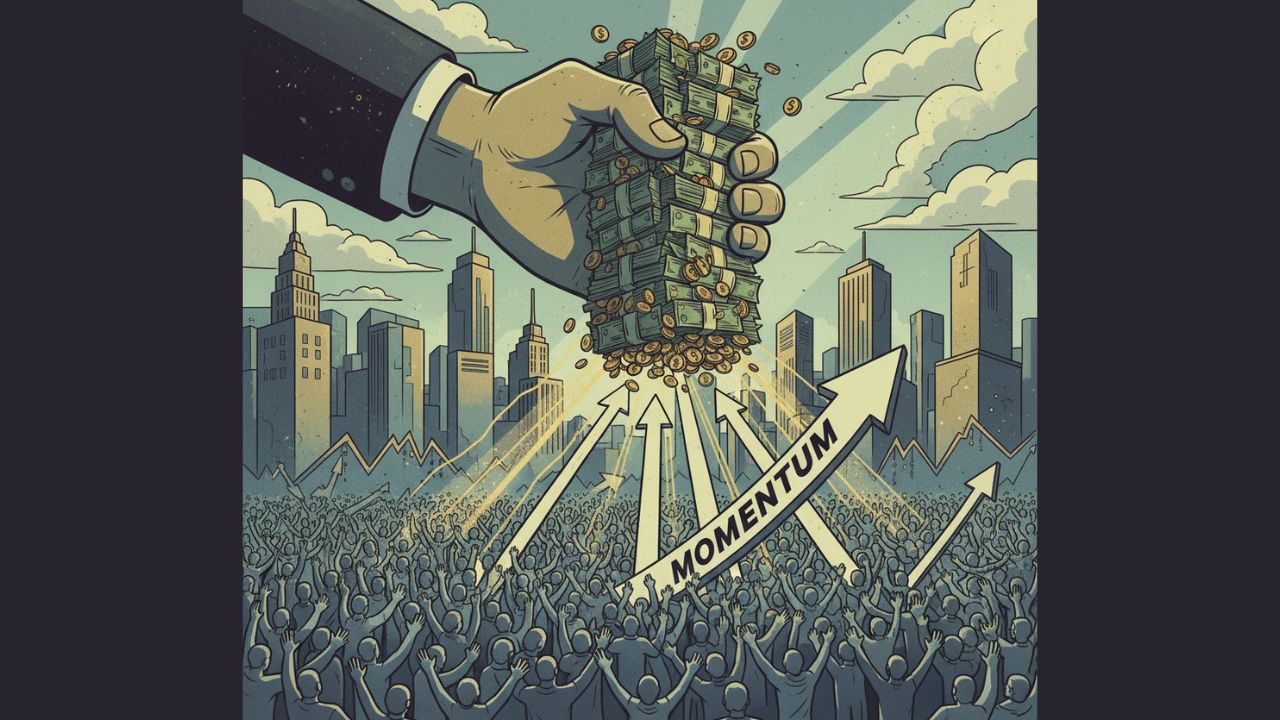In financial markets, it may seem that prices and momentum are shaped by the sheer number of participants trading every day.
But the true engine behind market trends is not the majority of people, rather the majority of money. Demand, supply, and price movements depend on the flow and weight of capital, not on how many individuals are involved.
Why Money Matters More than People?
Every buy or sell order in the market is not equal. A small retail investor purchasing 10 shares exerts far less influence than an institutional investor executing trades worth billions. Think of it in simple terms:
- If 1,000 small traders each buy $100 worth of a stock, the total demand equals $100,000.
- But if a hedge fund executive buys $100 million worth of the same stock, their single order outweighs the combined impact of thousands of individual investors trading much smaller amounts.
Thus, the market does not measure participation by number of people but by the volume of money moving in and out of assets.
Institutions as Momentum Drivers
Major institutional players such as mutual funds, hedge funds, pension funds, and sovereign wealth funds control enormous pools of capital. Their trading decisions – shifting allocation between asset classes, sectors, or specific stocks – create waves that retail traders often ride after the move has already begun.
When an institution decides to build or exit a large position, it alters visible supply and demand. This shift pulls prices strongly in one direction, creating momentum. Retail traders amplify moves only marginally compared to institutional capital.
The Illusion of the Crowd
At first glance, markets like crypto or retail-heavy penny stocks seem to reflect the behavior of large crowds of small traders. However, even here, the largest holders – so-called “whales” – exert outsized influence. A few wallets selling millions in crypto can crash prices more severely than thousands of small trades.
This underscores the principle – money concentration outweighs participation numbers.
Also Read – I Created the Best Bitcoin Guide You’ll Ever Read
Real Demand and Supply
Market textbooks define supply as the willingness of sellers to sell, and demand as the willingness of buyers to buy at a price level.
But in practice, willingness without capital is powerless. True demand shows up only when substantial money flows into an asset. Likewise, true supply becomes visible when large capital decides to exit.
Therefore:
- High demand = majority of capital flows into buying
- High supply = majority of capital flows into selling
- Momentum = imbalance in capital allocation, not imbalance in headcount
You’ll want to read this next – What is IBZ and ISZ in Trading? – Important Points to Know
Practical Implications for Traders
- Follow the money, not the crowd. Looking at institutional flows, volume analysis, and open interest gives more reliable signals than social media chatter.
- Understand market psychology at scale. Retail psychology matters in building sentiment, but only big capital decides how far and how fast markets move.
The Bottom Line
Market movements are not democratic – they are capitalistic. One trader with a billion dollars exerts more influence than a million traders with a single dollar each. True demand and supply are expressed not by the majority of traders but by the majority of money. For investors and traders seeking to understand momentum, the most valuable question is not “How many people are buying?” but “How much capital is buying?”
This article is for informational purposes only and should not be considered financial advice. Investing in stocks, cryptocurrencies, or other assets involves risks, including the potential loss of principal. Always conduct your own research or consult a qualified financial advisor before making investment decisions. The author and publisher are not responsible for any financial losses incurred from actions based on this article. While efforts have been made to ensure accuracy, economic data and market conditions can change rapidly. The author and publisher do not guarantee the completeness or accuracy of the information and are not liable for any errors or omissions. Always verify data with primary sources before making decisions.

